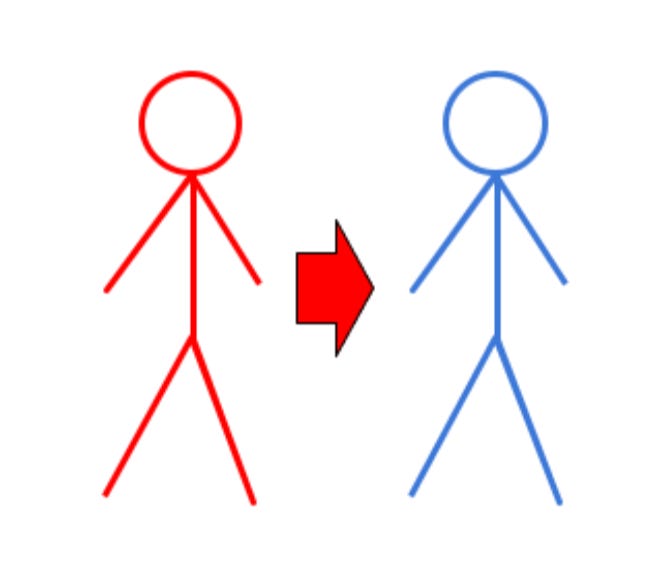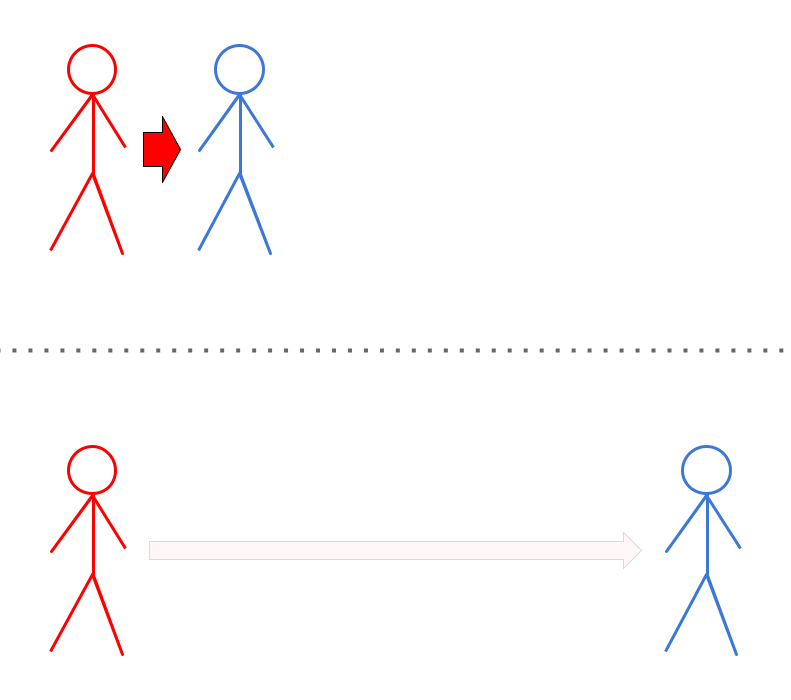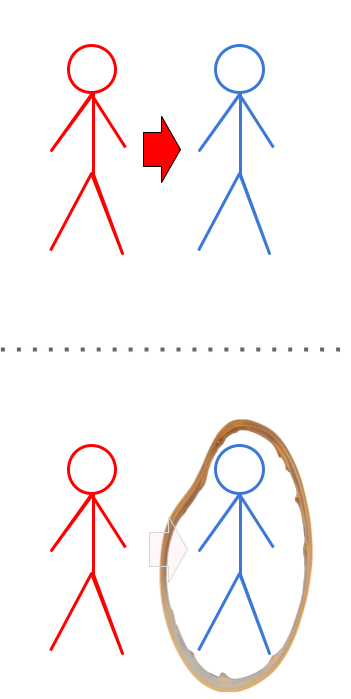Here I define autonomy as not having your insides controlled by your outsides.
Complete autonomy is impossible, of course. This is the lim→∞.
For example, imagine a bacterium.
It has insides: its guts.
It has outsides: its environment.
And in between, it has a membrane.
The membrane is the thing that attempts to control what comes in and what goes out. For example, pores can guide nutrients in and waste out.
The membrane is what maintains the bacterium’s separation from the environment.
Boundaries can grant autonomy.
For a bacterium to stay autonomous, its membrane must not dissolve.
In general, for an agent to stay autonomous, its boundaries must not dissolve.
(A bacterium is just one kind of agent, and “boundaries” are just another term for “membrane”.)
Suitable boundaries grant autonomy.
Boundaries can provide safety without physical distance.
Let’s say an agent (blue) is endangered by a threat (red).
What could make blue safe?
One way is physical distance:
Another way is suitable boundaries:
Boundaries can provide “causal distance”.
In this way, suitable boundaries provide causal distance without physical distance.
For details, see Agent membranes and causal distance.
Boundaries can allow cooperation.
When agents can rely on boundaries for safety (as opposed to relying on physical distance), they can interact more closely with each other.
And when agents interact more closely, they can cooperate more!
For details, see «Boundaries», Part 1: a key missing concept from utility theory.
To preserve autonomy, preserve boundaries.
Boundaries can prevent your insides from being controlled by your outsides.
Further reading
How this relates to multi-scale alignment:
For discussion about emotional boundaries:










